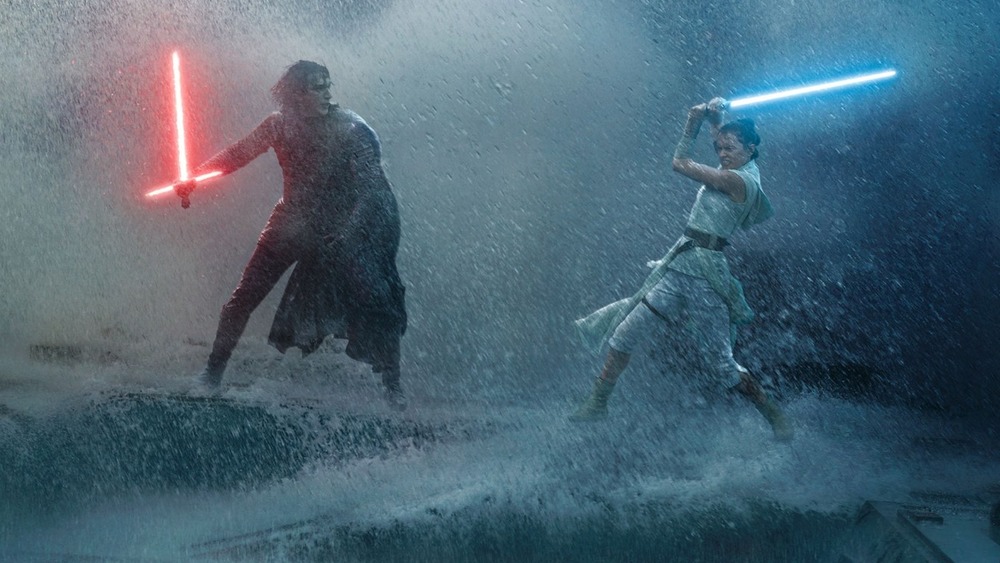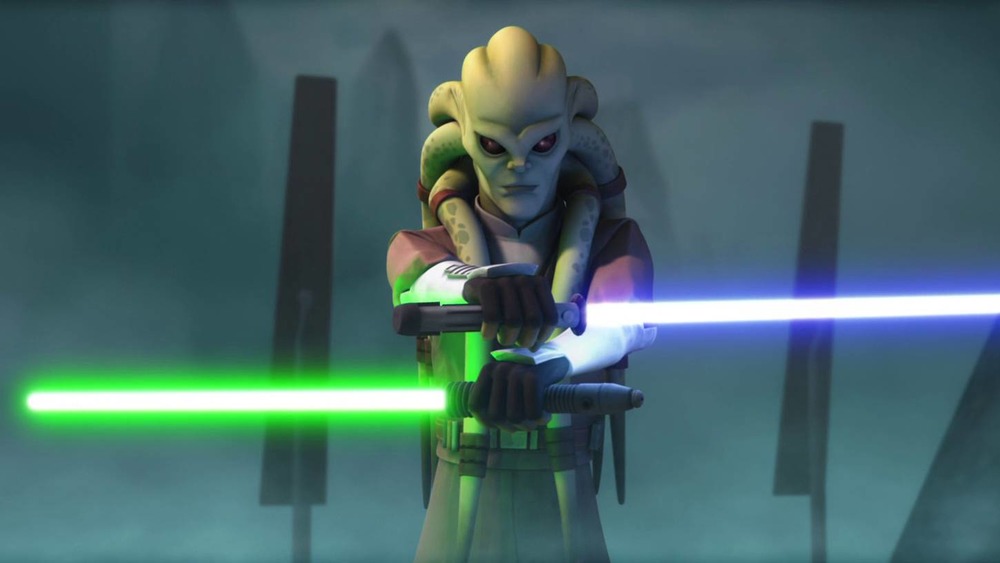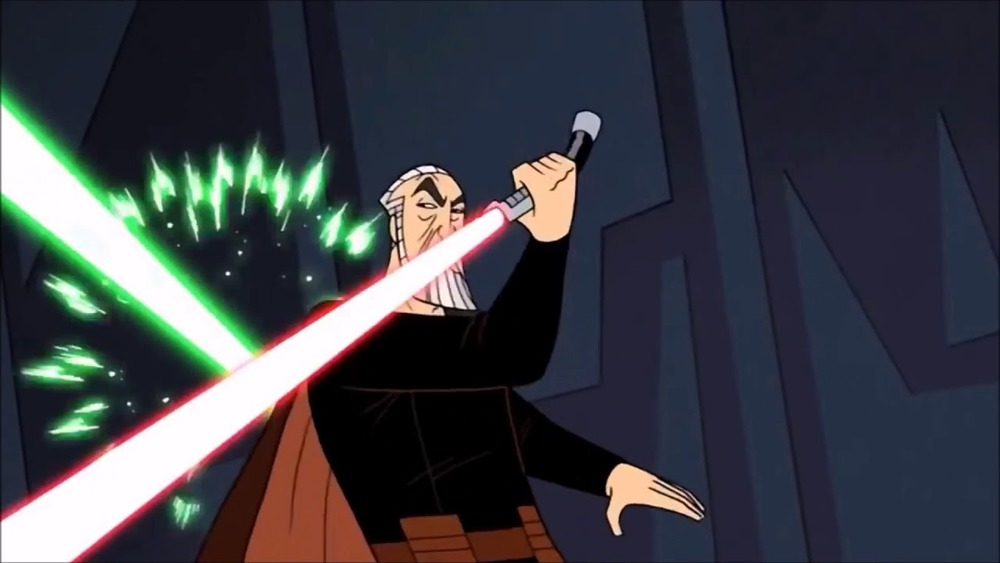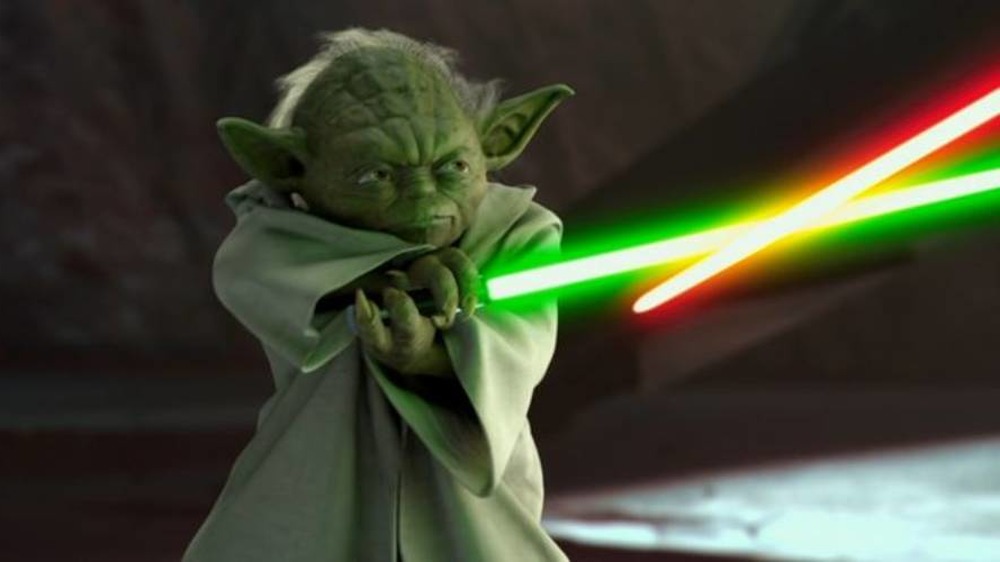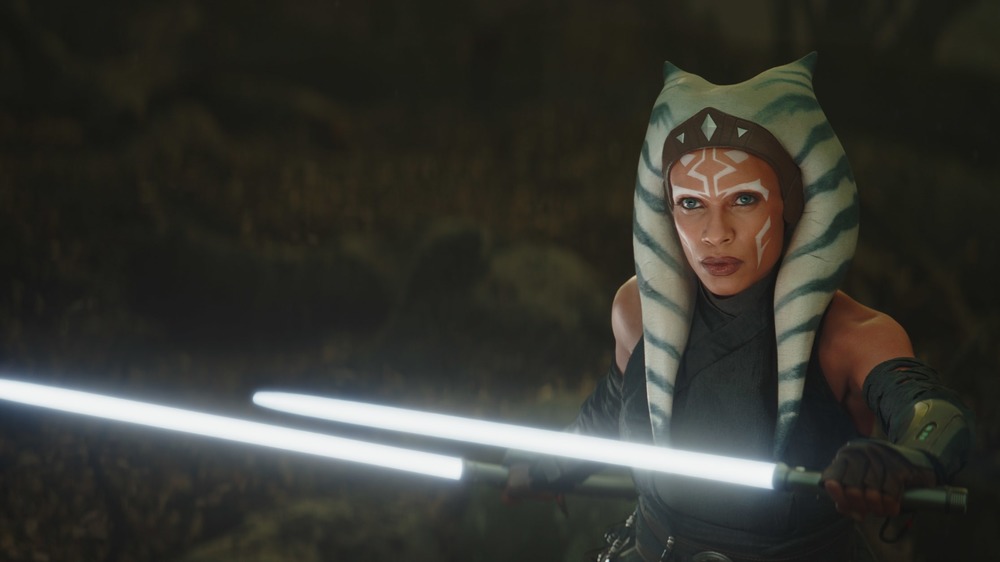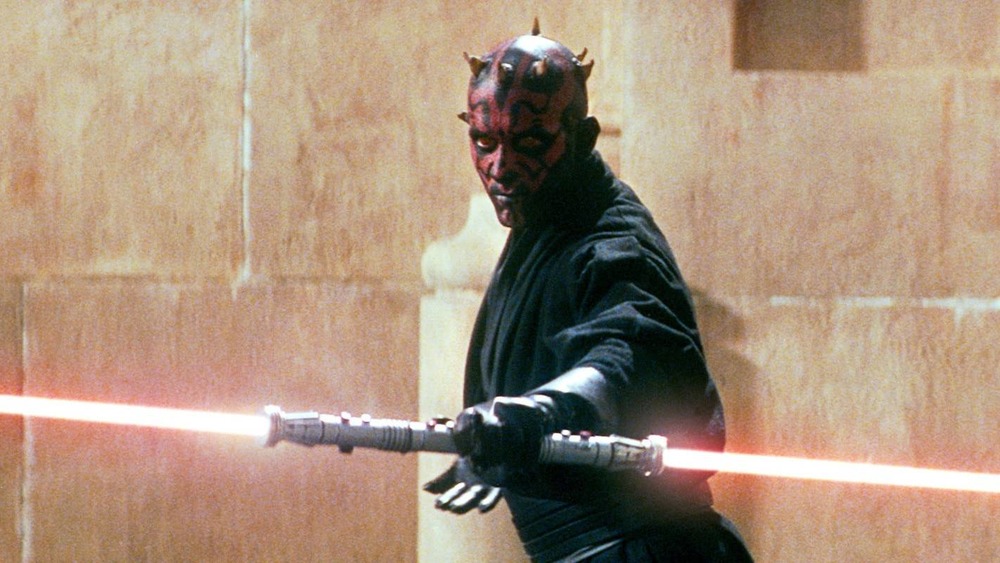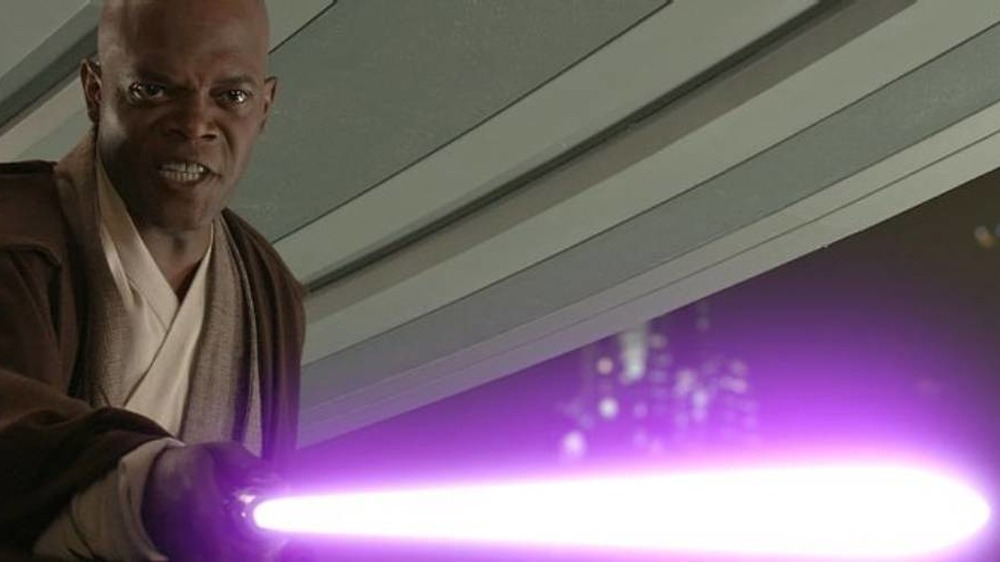Star Wars: Jedi Fighting Styles Explained
When Star Wars first came out back in 1977, it changed culture forever. It ushered in the summer blockbuster and gave society a new type of mythology. The entire world knew who Luke Skywalker and Darth Vader were, and things like the Force and lightsabers became universally accepted things you could drop in casual conversation and have everyone understand you.
As more Star Wars stories were told, the idea of what a lightsaber was began to grow. It was no longer just a fancy, futuristic version of a samurai sword. The color of your lightsaber in addition to the process of selecting your personal Kyber crystal took on greater significance, and scientists began wondering if it was possible to create a weapon of pure light in real life.
However, a lightsaber isn't a toy. It's an elegant weapon, and in the Star Wars universe, it's only something you receive after agreeing to undergo intense training. But that doesn't mean there's only one way to use this weapon. Even if you haven't been able to put a name to each fighting style, you've likely noticed Jedi and Sith have different relationships with their lightsabers. In fact, there are seven combat styles available with a lightsaber, and once you master them all, you become one of the most powerful warriors in the galaxy.
Form I: Shii-Cho
Lightsaber combat has been broken down into the seven schools. Each one is designed to take advantage of the full capabilities of the weapon, and while lightsaber users can certainly deviate from these styles, understanding them is crucial for any Jedi-in-training.
The first and most rudimentary style of using a lightsaber is referred to as Shii-Cho. It's regarded as the oldest form of lightsaber combat, and it's the variation that's taught to every Jedi youngling. Sith have also been known to adopt the Shii-Cho fighting style, but they tend to do away with it quickly in favor of more aggressive attacks.
On its own, Shii-Cho is still incredibly effective, which is why many Jedi seen throughout Star Wars: The Clone Wars have been seen using it at one point or another. It essentially involves a quick flurry of strikes in which you adopt a defensive position after an attack. While it sounds easy, one can only become a master of Shii-Cho upon attaining inner peace. The lightsaber has to become an extension of the user's being before this technique can be utilized efficiently.
Form II: Makashi
Shii-Cho was the primary form of combat for a while, but once Sith Lords and the Dark Jedi emerged, a more combative method became necessary. Lightsaber combat needed to adopt to dueling with both offensive and defensive measures, so the style of Makashi (the Contention Form) was born.
Makashi is a more elegant type of lightsaber combat, emphasizing complex footwork and balance to outwit your opponent. Accuracy and timing are more important than brute strength. It also depends primarily on the user wielding their lightsaber with a single hand. A lot of one-handed moves emerged out of this technique, and it's the variety you can see Count Dooku utilize in Attack of the Clones. As such, it's more common to see someone practice Makashi with a curved-hilted lightsaber that fits better in the palm and gives one greater control over more fluid movements. In the Makashi form, the user can typically disarm an opponent without killing them.
Form III: Soresu
Lightsaber fighting isn't always about attacking directly. If your opponent has a ranged weapon, then you need a way to use your lightsaber to defend yourself against oncoming attacks. That's how the next form, Soresu, developed.
Soresu utilizes more defensive strategies, and it's believed it was developed by the Jedi during the rising prominence of blasters in the galaxy. It went on to become a focal point of Jedi training with all younglings learning how to dodge laser blasts when they have their eyes covered by a shield. With greater proficiency, Soresu also incorporates short sweeps, quick dodges, and tight moves for the ultimate in defensive coverage. The goal is to make yourself as minimally-exposed to ranged fire as possible.
Soresu is also suitable when a Jedi is expecting a prolonged battle. The user can defend themself for as long as possible, observing their opponent's techniques so that they can come up with an effective attack. As such, Soresu became commonplace when a combatant wished to reason with their opponent or wanted to disarm them over time. Obi-Wan Kenobi was a noteworthy master of this technique, often choosing to defend for extended periods of time before going on the offensive.
Form IV: Ataru
Ataru is arguably the most aggressive form of lightsaber combat. The user relies heavily on the Force to guide them through a series of acrobatics to disorient their opponent, and as such, it's most commonly used with one-on-one duels. When a Force user relies on Ataru, they hope to bring a quick end to the battle.
Ataru depends heavily on sweeping strikes that come one after the next, which typically results in forcing the opponent go on the defensive. Cartwheels, somersaults, and spinning are typically seen, and a master of Ataru battles will fight from all directions, including the front, behind, overhead, and all sides. Most Star Wars fans will recognize it being used by Master Yoda during his duel with Count Dooku in Attack of the Clones.
While Jedi can master this art form, it's most commonly seen in the Sith. This is due to the fact the combat relies heavily on aggression, and masters who give in to such hate are often seduced by the dark side.
Form V: Shien/Djem So
Due to Form III giving a lightsaber user a defensive edge, combatants needed a way to break through the shielding. As such, two offensive variations emerged: Shien and Djem So.
Shien, also known as "Perseverance Form," came first and was designed to shield a user against blaster fire without compromising one's ability to set off a counterattack. It's best used when a Jedi is taking on hordes of opponents, necessitating defending oneself without sacrificing offensive capabilities. Djem So relies more on parries and blocks during lightsaber dueling. The user retains a defensive position for both close-quarters and ranged combat, but rather than only attack when an opening becomes available, Djem So actively requires the user to push the offense.
Form V typically isn't seen by Jedi because many believe it relies more on the Force itself rather than the lightsaber. That doesn't mean you can't see it. Shien is commonly utilized by Ahsoka Tano during the Clone Wars, and her master, Anakin Skywalker, is often seen utilizing Djem So throughout the same time period.
Form VI: Niman
Form VI, Nima, sought to combine all of the elements of the previous iterations of lightsaber combat. The idea was that by merging all of them together, a Jedi could eliminate all of the weaknesses found in each method, but conversely, none of the offensive measures would be quite as effective.
Thanks to its approach of moderation, it quickly grew in favor with Jedi and was the last form developed by the Jedi Order. The reason for this is that it would allow the user to triumph over an opponent without outright dominating them. A Jedi could defend themselves efficiently and deliver justice without letting one's emotions overpower them.
As such, it's surprising that one of the main users of Niman is actually Darth Maul as seen in The Phantom Menace. It suggests that his master wanted the Sith Lord to be proficient in this dueling form so that he would be well-suited against Jedi. As proven in his battle against Qui-Gon Jinn and Obi-Wan Kenobi, it was indeed effective.
Form VII: Vaapad/Juyo
The final type of lightsaber combat is also the most controversial. It's called either Vaapad or Juyo, but no matter which name it goes by, it encourages the user to fully embrace their emotions, making it the most vicious combat style out there. Of course, giving into emotion goes against the Jedi way, which is why it's unsurprising that Jedi of old who practiced this style ultimately fell to the dark side.
However, Vaapad is more than just a fighting style. In order to master it, the user has to actively enjoy the fight and relish the idea of winning over an opponent. Vaapad allows one to enter a state of mind that acts as a sort of portal into the dark side, allowing even Jedi to harness the darkness and emerge victorious. While attacks through Vaapad may seem to be disconnected initially, it's all part of an elegant ballet designed to overcome even the strongest adversaries.
During the era of the prequel trilogy, Mace Windu was the only known master of Vaapad. He mastered it as a way to control the inner darkness within him, and it's the reason why he was able to overcome Darth Sidious in Revenge of the Sith. Mace Windu could have taken out the most dangerous individual in the galaxy had it not been in his nature to honor the Jedi way and refuse to kill an unarmed fighter.
